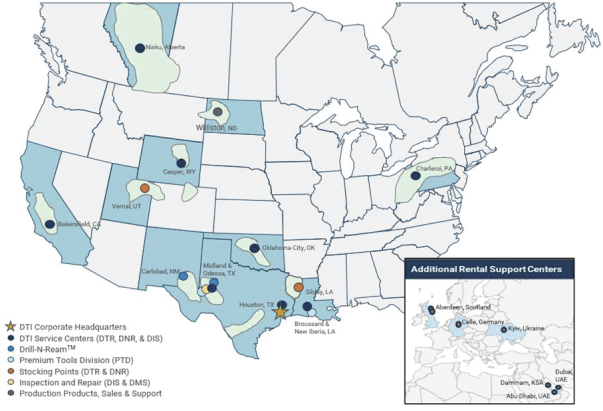The information in this document is not complete and may be changed. Drilling Tools International Corporation may not sell the securities offered by this document until the registration statement filed with the U.S. Securities and Exchange Commission, of which this document is a part, is declared effective. This document shall not constitute an offer to sell or the solicitation of an offer to buy nor shall there be any sale of these securities in any jurisdiction where such offer, solicitation or sale is not permitted.
PRELIMINARY—SUBJECT TO COMPLETION DATED JUNE 24, 2024

|

|
MERGER PROPOSAL—YOUR VOTE IS VERY IMPORTANT
To the Stockholders of Superior Drilling Products, Inc.:
The board of directors of Drilling Tools International Corporation (“DTI”) and the board of directors of, and special committee of the board of directors of, Superior Drilling Products, Inc. (“SDPI”) have approved an Agreement and Plan of Merger (as the same may be amended or supplemented from time to time, the “Merger Agreement”) by which (a) DTI Merger Sub I, Inc., a Delaware corporation and a direct, wholly owned subsidiary of DTI (“Merger Sub I”) will merge with and into SDPI (the “First Merger”), with SDPI surviving as a wholly owned subsidiary of DTI, and (b) upon the effective time of the First Merger (the “First Effective Time”), SDPI, as the surviving corporation of the First Merger, will merge with and into DTI Merger Sub II, LLC, a Delaware limited liability company and a direct, wholly owned subsidiary of DTI (“Merger Sub II”) (the “Second Merger” and together with the First Merger, the “Merger”), with Merger Sub II surviving as a wholly owned subsidiary of DTI, all as described in greater detail in the accompanying proxy statement/prospectus.
Subject to the terms and conditions set forth in the Merger Agreement, at the First Effective Time:
| • | each share of SDPI common stock, par value $0.001 per share (“SDPI Common Stock”), issued and outstanding immediately prior to the First Effective Time shall be converted into the right to receive, without interest, at the election of the holder thereof, subject to the proration provisions of the Merger Agreement as describe in this proxy statement/prospectus: (a) for each share of SDPI Common Stock with respect to which an election to receive cash has been made and not revoked or lost (each, a “Cash Election Share”), $1.00 in cash (the “Cash Election Consideration”); (b) for each share of SDPI Common Stock with respect to which an election to receive stock has been made and not revoked or lost (each, a “Stock Election Share”), 0.313 validly issued, fully paid and non-assessable shares of common stock, par value $0.0001 per share (“DTI Common Stock”), of DTI (the “Stock Election Consideration” and together with the Cash Election Consideration, the “Merger Consideration”); and (c) for each share of SDPI Common Stock with respect to which no election to receive the Cash Election Consideration or the Stock Election Consideration has been made (each, a “No Election Share”), the Cash Election Consideration or the Stock Election Consideration, as provided in the proration mechanics described below; and |
| • | (a) if the product obtained by multiplying the aggregate number of Stock Election Shares and 0.313 (the “Stock Election Multiplier” and such product, the “Aggregate Stock Elections”) exceeds 4,845,240 (the “Maximum Share Amount”), (i) all Cash Election Shares and No Election Shares will be exchanged for the Cash Election Consideration, and (ii) a portion of the Stock Election Shares of each holder thereof will be exchanged for the Stock Election Consideration, with such portion being equal to the product obtained by multiplying the number of such holder’s Stock Election Shares by a fraction, the numerator of which is the Maximum Share Amount and the denominator of which is the Aggregate Stock Elections, with the remaining portion of such holder’s Stock Election Shares being exchanged for the Cash Election Consideration, (b) if the Aggregate Stock Elections is less than 4,112,752 (the “Minimum Share Amount” and the difference between the Minimum Share Amount and the Aggregate Stock Elections, the “Shortfall Amount”), then (i) first, if the Shortfall Amount is smaller than or equal to the number of No Election Shares multiplied by 0.313 (the “No Election Share Amount”), then: (A) the Cash Election Shares will receive cash as they have elected and will not be affected by the adjustment; and (B) the No Election Shares held by shareholders will be exchanged for the Stock Election Consideration equal to the product of (1) the number of No Election Shares of such holder and (2) a fraction, the numerator of which is the Shortfall Amount |



